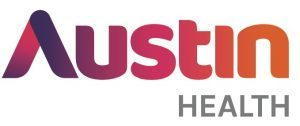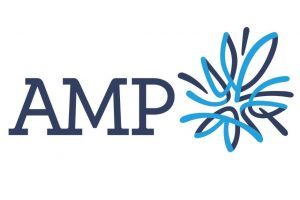Collaborative Learning Strategies
What is collaborative learning? Simply put, collaborative learning strategies are instructional methods that encourage learners to work together to achieve shared goals. It’s not just…
Our Online eLearning Solutions
At Instructional Design Australia, we specialise in the rapid creation of visually engaging and responsive online learning and eLearning training solutions.
Our typical online learning programs come with standard inclusions encompassing a wide range of interactive elements, multimedia, visual features and quiz types.
We also offer optional inclusions to take eLearning training programs to the next level.
Need a program developed fast? We can produce eLearning swiftly and economically using our rapid eLearning development approach, which is suitable for projects under time pressures or with a limited budget.
Our accessible eLearning programs support Web Content Accessibility Guidelines (WCAG) 2.2, making them fully accessible to screen reader users and keyboard-only users.
Optional Inclusions
We offer a wide range of optional inclusions to add further value to programs.
You can select elements that can be highly customised, tailored to your specific needs.
Participants are immersed in their learning experience via elements that may include bespoke videos, simulations, branching scenarios and gamification that bring learning to life in a real-world context. We work closely with clients to produce videos and infographics that support an immersive learning experience.
Rapid eLearning Development
This type of eLearning training can be produced rapidly and economically, making them a suitable solution for projects under time pressures, or with a limited budget.
Accessible (WCAG 2.2 compliant) eLearning
These eLearning training programs support Web Content Accessibility Guidelines (WCAG) 2.2, making them fully accessible to screen reader users and keyboard-only users.
How much does eLearning development cost?
Online learning or eLearning development varies in cost, time and level of complexity. As a starting point, we offer standard inclusions that encompass a wide range of interactive elements, multimedia, visual features and quiz types.
We also offer optional inclusions to take eLearning training programs to the next level.
Learn More About Online Learning
Click one of the links below to learn more about eLearning:
Why Online Learning or eLearning training?
Have you identified a learning need in your organisation?
Is the target audience geographically dispersed?
Are you under a time and/or budget crunch that limits travel/off-the-job opportunities for face-to-face learning?
Do you need to deliver training to a large number of employees?
If you answered yes to any of the above questions, online learning may be the solution for your needs.
Online learning is convenient for busy employees and aligns with the needs of modern learners. Its flexibility in both time and place allows participants to access and complete learning around their work and personal commitments. For organisation, it often proves more cost-effective and practical than face-to-face delivery. eLearning can also be used as an embedding, communication or pre-learning tool as part of end-to-end learning programs.
What are the preference of the learners in todays workplace?
Case studies
See samples of some of our recent projects.









































eLearning Enquiry
Office
E: info@discoverlearning.com.au
Ph: 1300 528 736
Michael Peart
E: michael@discoverlearning.com.au
Ph: 0434 075 231
Bianca Schimizzi
E: bianca@discoverlearning.com.au
Ph: 0416 013 623
eLearning Course FAQs
eLearning (short for electronic learning) is a structured program that is delivered digitally on a computer, tablet or mobile device. eLearning courses are typically self-paced, completed remotely and do not involve a facilitator/trainer.
The cost to develop eLearning courses varies, depending on factors such as the volume of content and level of interactivity. A 15–30-minute program with standard features can cost as little as $4000.
eLearning courses can be the perfect solution for some learning needs; however they are not recommended for all.
The delivery method/s selected should be appropriate to the learning need/s and other organisational factors, which may include:
• Where participants are currently located
• What the ‘ways of working’ look like for participants (e.g. operating model)
• Availability of training facilities
• Any environmental constraints (e.g. limited bandwidth for eLearning)
• Resource availability (Subject Matter Experts and physical resources)
• Time pressures
A blend of solutions such as eLearning, on-the-job training, self-paced and coaching will likely offer the most effective, ‘just in time’, ‘bite-sized’, flexible learning approach.
If constraints leave eLearning as the only option, consider incorporating job aids, real-life application-based experiences and embedding activities to solidify knowledge and support learning transfer.
From Instructional Design Australia’s experience, some of the most popular eLearning courses include:
• Induction programs
• Diversity and inclusion training, particularly in the health sector
• Compliance training, such as health and safety, EEO, Conflict of Interest and Fraud and Corruption
• Career planning
• Data security
• Leadership training
Whilst induction programs and leadership training have become increasingly popular, eLearning forms one component of a blended learning solution – typically to provide foundational content that is later built on and applied through on-the-job training, coaching/mentoring, workshops and embedding activities.
Whilst both eLearning and online learning are completed digitally, they are quite different.
eLearning is self-paced, and can be completed anytime, anywhere. Assessment is built into the course, with correct answers set, therefore an assessor is not required to review responses. The learning management system (LMS) reports the learner’s results.
Online learning is typically overseen by a facilitator. Whilst some structure, content and activities may be provided readily online, through an LMS, the facilitator will usually run live webinars and discussions. Learners are assigned to groups and may collaborate with their peers. Assessments are submitted online, and reviewed by an assessor, therefore they may include more complex, open-ended questions and assignments (e.g. projects, essays, reports etc.).
The time it takes to create an eLearning course is influenced by a range of factors, including the volume of content, complexity of interactive elements and availability of SMEs. A 15–30-minute program with standard features and finalised content provided can take as little as 3-4 days.